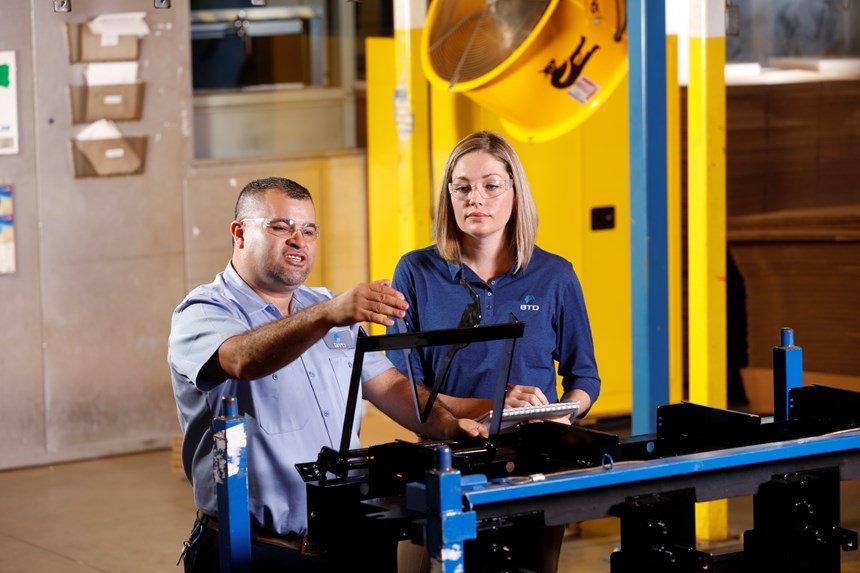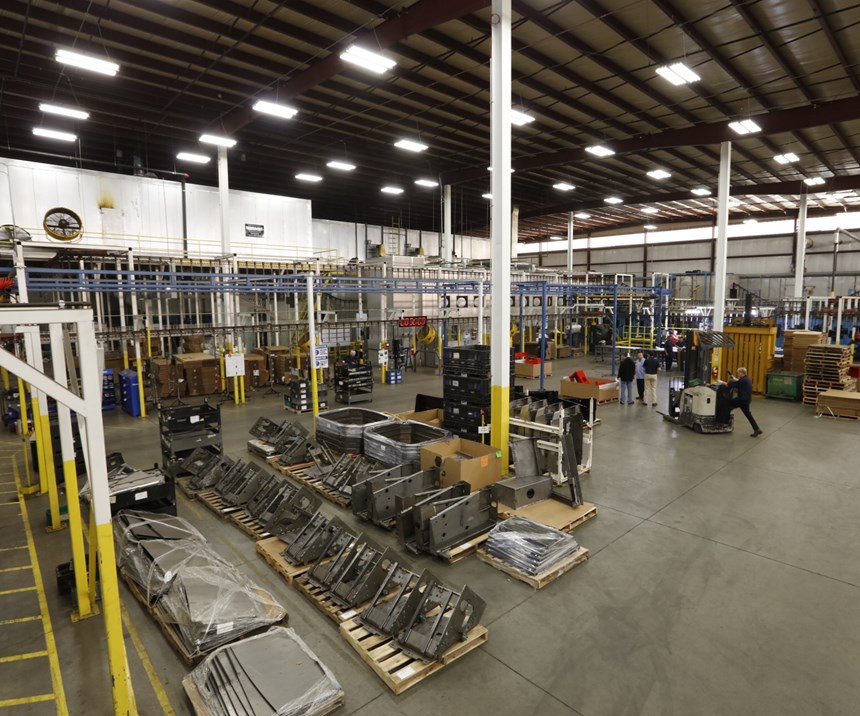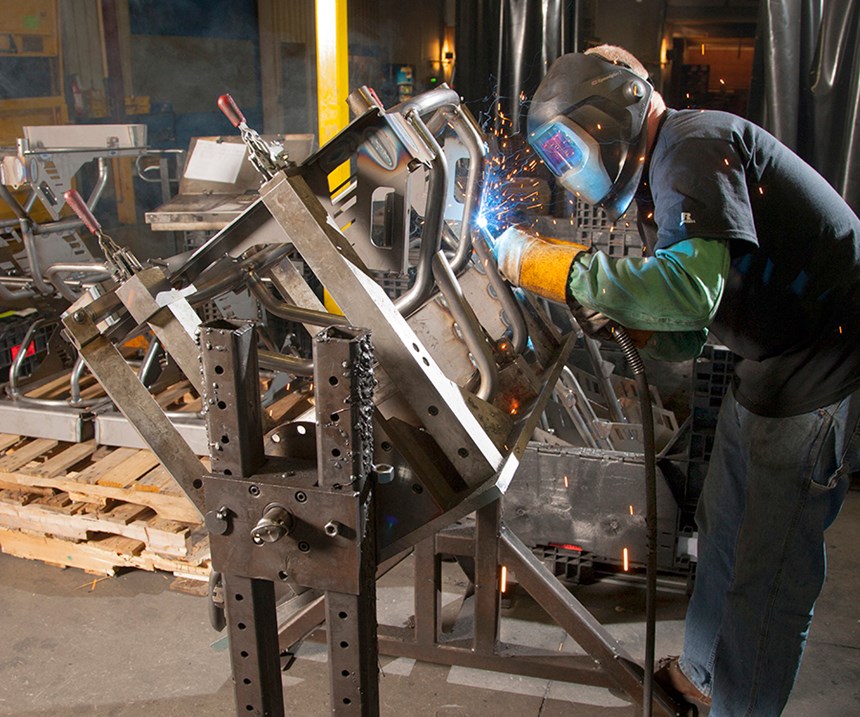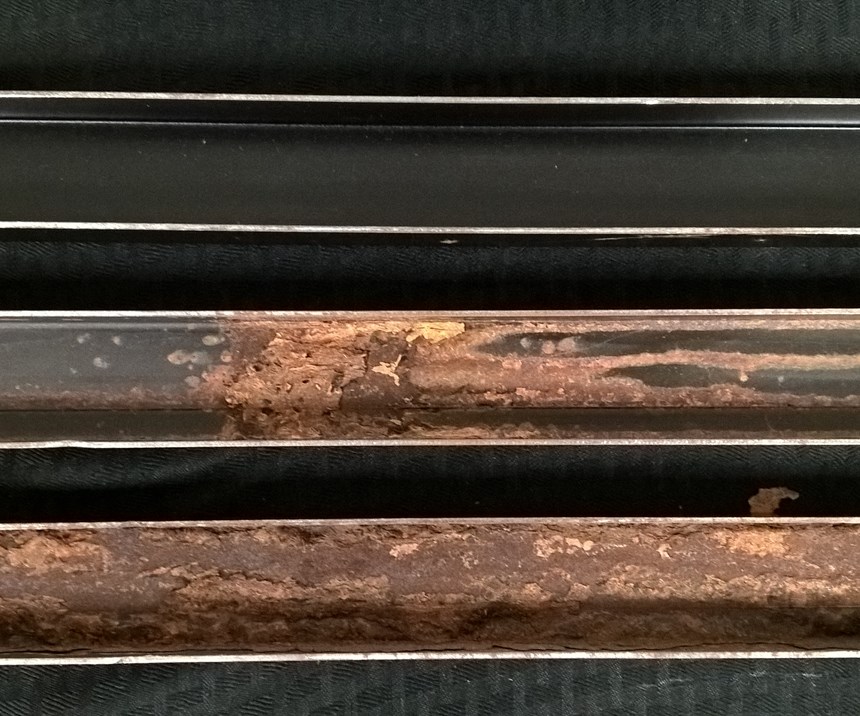BTD Manufacturing in Detroit Lakes, Minnesota, is a $250 million metal fabrication company that serves some of the world’s top manufacturers of construction, industrial, agricultural and trucking/transportation equipment, as well as recreational vehicle OEMs.
The company has four facilities totaling more than one million square feet, with locations in Minnesota, Illinois and Georgia. BTD’s services include metal fabrication, forming, welding, machining, tool and die work, stamping, cutting, tube cutting and forming, CNC, EDM, prototyping and laser cutting.
BTD added advanced parts finishing to its roster of services three years ago, and now enjoys great demand for these processes. Customers can choose between two coating and painting processes to protect the parts they use in their equipment—zirconium-based pretreatment followed by paint or a autophoretic coating/paint process.
BTD introduced its phosphate-free, zirconium-based pretreatment line to its Lakeville, Illinois, facility in 2015. The company installed an automated seven-stage process that uses a zirconium-based pretreatment, which is a green alternative to iron phosphate systems. This process—which uses Henkel’s Bonderite M-NT1—runs at low temperatures and contains no regulated heavy metals.
Minimizing Waste Production
Because the system uses less water than traditional phosphate-based systems and produces no sludge, it minimizes waste production. Process steps include a spray application of an alkaline cleaner; water rinse to remove the alkaline cleaner from part surfaces; an acid cleaning step (or pickle) to remove inorganic scale; alkaline water rinse to remove any acid residues remaining on the part; clean water rinse; spray application of the zirconium-based pretreatment onto exterior surfaces; and a final water rinse. Following the application, components enter a drying booth. The powder coat is applied and oven cured.
Zirconium-based pretreatments deliver excellent corrosion performance on painted part surfaces. However, some BTD customers have components with complex geometries that require 100 percent corrosion protection even on concealed internal surfaces. Since spray-applied coatings cannot effectively reach these areas, the company needed an alternate method of corrosion protection. BTD found a solution to this challenge in a subsequent acquisition of Impulse Manufacturing in 2016. The Dawsonville, Georgia, plant featured a newly installed autophoretic coating (a-coat) line that replaced a spray-applied metal phosphate/powder coating process. While the Georgia plant’s old process had been performing well for the company’s existing customers, the a-coat system could better meet anticipated production demands and performance requirements, and help the business grow.
Taking on New Business
In fact, a new customer was an ideal candidate for autophoretic coating. The customer’s parts required a two-pass, powder-coating process where the first pass applied a primer and the second pass a powder paint topcoat. Using the previous metal phosphate system, this two-pass process would have completely consumed the plant’s available coating capacity, doubling processing time from 3.5 to 7 hours. The new a-coat process enables the primer and topcoat to be applied in one pass, increasing production capacity while delivering comprehensive corrosion protection.
“Replacing our existing coating line with the a-coat process meant we could take on a major new piece of business and still have capacity to add more projects,” says Karl Baysden, director of sales at BTD. “What previously required eight hours and two passes on the old line could now be completed in just two to three hours with a-coat. The coating’s ability to access the hidden inner areas of components with intricate geometries is another advantage. A-coat provides superior corrosion protection to processes offered by our competition.”
The a-coat system installed at BTD Dawsonville uses Henkel’s Bonderite Metal Paint Process system. Rather than using spray application, the process is a multistep immersion system that reactively deposits a protective coating on any ferrous metal surface it contacts. A-coat can reach hidden and deep recesses and cavities not accessible to other protective coatings, including large or small parts with tight radiuses, complex interior cavities and lengthy configurations such as tubes. Every square inch of the part gets coated, no matter how complicated the design.
Cleaning, Coating and Curing
The a-coat process includes three phases—cleaning, coating and curing. The exact number of steps in the overall process varies based on performance requirements. For example, the BTD line’s cleaning phase involves eight inline, automated cleaning and rinsing steps. First, parts go through an alkaline spray cleaning, then an alkaline immersion cleaning, which combine to remove organic soils such as oil and grease from both interior and exterior surfaces. Parts are rinsed with fresh water to remove alkaline cleaner residues, then pass through an acid-pickle immersion to remove inorganic soils, such as rust, weld scale and laser scale. Components are rinsed to remove the acid pickle; rinsed again to neutralize acid residues; and rinsed a final time with clean water prior to deposition of the a-coat layer.
The BTD coating phase involves five steps that include coating, rinsing and a final reaction rinse. Parts enter the autophoretic immersion tank where the coating chemically deposits on the surface of the clean component. A subsequent water rinse step removes any unreacted autophoretic chemistry from the part’s surface. The part then enters a final reaction rinse to set the coating layer prior to dehydration. The part is removed from the reactive rinse and enters a low-temperature oven to remove moisture from the a-coat layer, preparing it for the final step of the coating phase, which is a powder topcoat application.
The more time a part spends in the a-coat tank, the thicker the deposited coating. The M-PP process coats only reactive metals and will even cover sharp edges. It will not bond to plastic, rubber, metal plating or stainless steel, so no masking is required. And the a-coat process has unlimited throw power.
Fully Apply and Cure in Three Hours
“Everything that gets wet gets coated,” Baysden says. “So, if liquid can enter an area, that area will be primed and painted.”
The final phase of the process involves curing the paint system. The part enters a cure oven where the a-coat primer and the powder coating crosslink on exposure to heat, becoming one unified corrosion-resistant coating. Factors that influence cure time and temperature include the maximum temperature of the metal substrate, ambient air temperature and the oven’s temperature ramp rate and air flow/velocity.
In just three hours, BTD’s a-coat system can fully apply and cure the combined primer and topcoat layers onto the most complex components. The efficiency of this process has effectively doubled coating capacity at the Dawsonville facility.
“Work that used to take an entire shift to complete can now be done in a morning,” says Baysden. “The tremendous capacity of our a-coat system has allowed us to add a new profit center to our company.”
Visit btdmfg.com and henkel.com
Related Content
TTX’s Automated Conveyor Carrier System Offers Wireless, Flexible Operation
ACC system designed for reliable, consistent point-to-point movement of everything from small to heavy parts.
Read MoreAn Altruistic Growth Strategy Puts People First
Professional Plating emphasizes investing in its team and fostering a supportive environment on the shop floor.
Read MoreCoatings Plant Evolves with Market Trends
Expanding its focus from exclusively serving the RV industry, one of this company’s stand-alone coatings plant has successfully extended its services to additional markets.
Read MoreTop Shop Leader Focuses on Its People as Key to Success
Twin Cities job shop, Avtec, was named a Top Shop for the third time in 2022, due in no small part to its commitment not only to the work it produces but to those who produce it — its employees.
Read MoreRead Next
Episode 45: An Interview with Chandler Mancuso, MacDermid Envio Solutions
Chandler Mancuso, technical director with MacDermid Envio discusses updating your wastewater treatment system and implementing materials recycling solutions to increase efficiencies, control costs and reduce environmental impact.
Read MoreDelivering Increased Benefits to Greenhouse Films
Baystar's Borstar technology is helping customers deliver better, more reliable production methods to greenhouse agriculture.
Read MoreEducation Bringing Cleaning to Machining
Debuting new speakers and cleaning technology content during this half-day workshop co-located with IMTS 2024.
Read More
















.jpg;maxWidth=300;quality=90)










